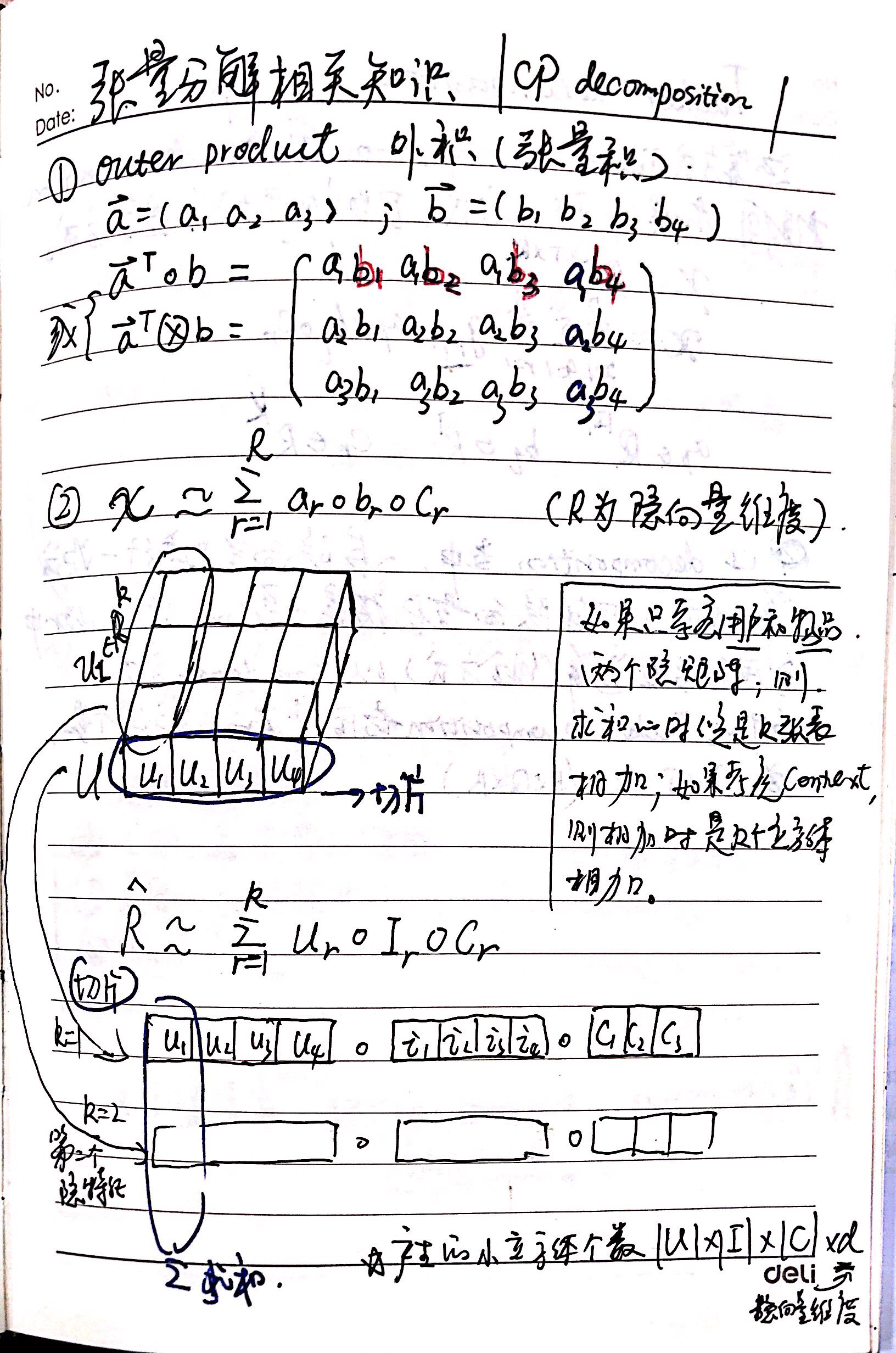本文主要将张量分解技术运用在跨领域推荐方法当中.
几个假设: 1)各个领域中的user一致(共用一张user matrix),2)各个领域的item不一致,且数量也不一致;3)多个domains
要解决的问题: 1) 对齐各个领域中的item,也就是最终的item matrix在各个领域中一致(如何同各个领域发生关系:转换矩阵)
要解决的问题: 2)张量分解中各个slice中的表的权重是一样的,跨领域推荐注重target doman,解决方法: 对各个领域加权
总之,同时分解还原多张评分矩阵,并且share user latent matrix, 当然也有一个share base item matrix (需要转换到各个领域中的item matrix), 最后同时最小化这些矩阵还原误差.
理解CP张量分解:

| 文献题目 | 去谷歌学术搜索 | ||||||||||
| Personalized Recommendation via Cross-Domain Triadic Factorization | |||||||||||
| 文献作者 | Liang Hu; Jian Cao | ||||||||||
| 文献发表年限 | 2013 | ||||||||||
| 文献关键字 | |||||||||||
| Recommender System, Cross-Domain Collaborative Filtering, Triadic Factorization; 张量分解 | |||||||||||
| 摘要描述 | |||||||||||
| Collaborative filtering (CF) is a major technique in recommender systems to help users find their potentially desired items. Since the data sparsity problem is quite commonly encountered in real-world scenarios, Cross-Domain Collaborative Filtering (CDCF) hence is becoming an emerging research topic in recent years. However, due to the lack of sufficient dense explicit feedbacks and even no feedback available in users’ uninvolved domains, current CDCF approaches may not perform satisfactorily in user preference prediction. In this paper, we propose a generalized Cross Domain Triadic Factorization (CDTF) model over the triadic relation user- item-domain, which can better capture the interactions between domain-specific user factors and item factors. In particular, we devise two CDTF algorithms to leverage user explicit and implicit feedbacks respectively, along with a genetic algorithm based weight parameters tuning algorithm to trade off influence among domains optimally. Finally, we conduct experiments to evaluate our models and compare with other state-of-the-art models by using two real world datasets. The results show the superiority of our models against other comparative models. | |||||||||||